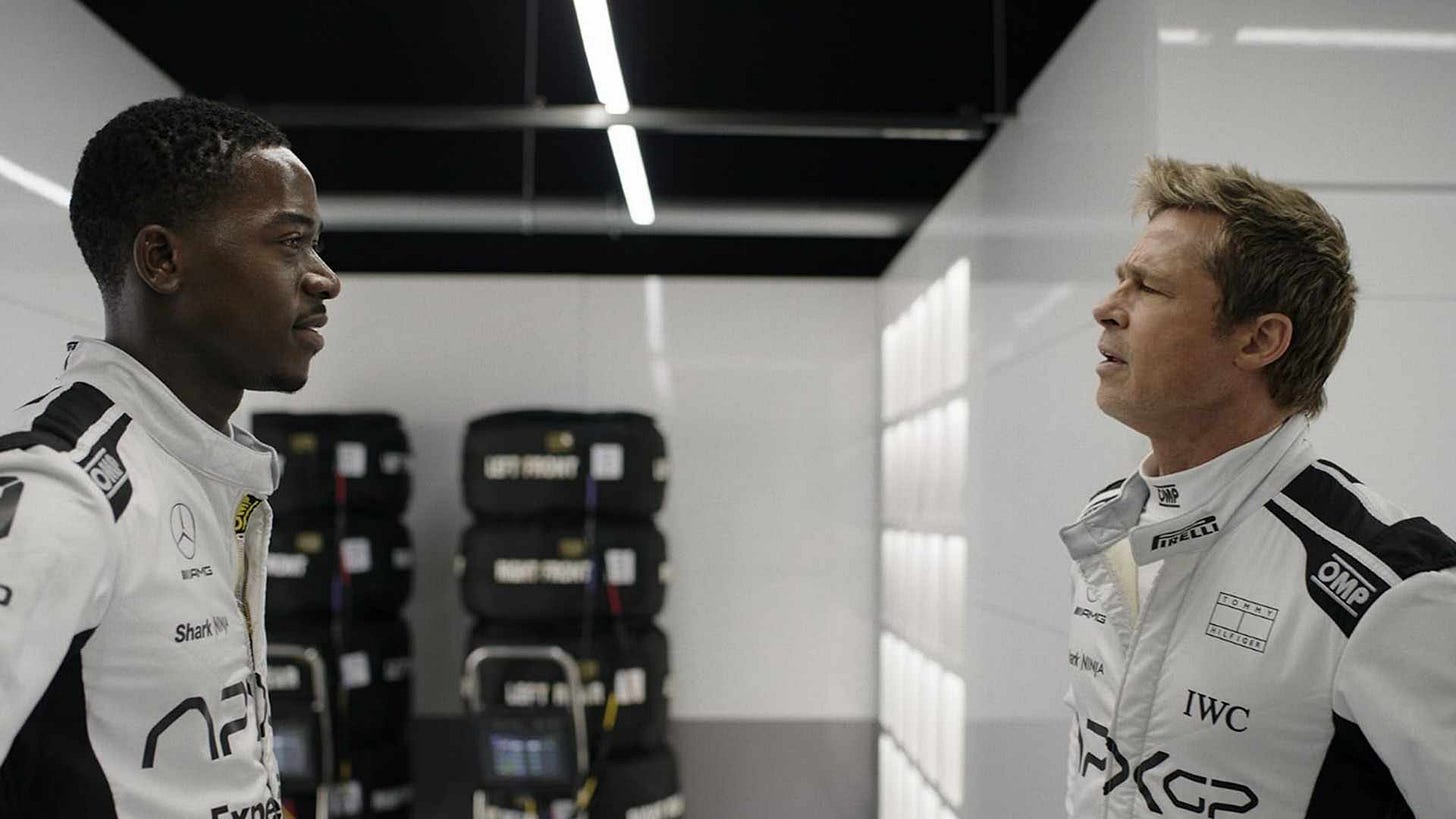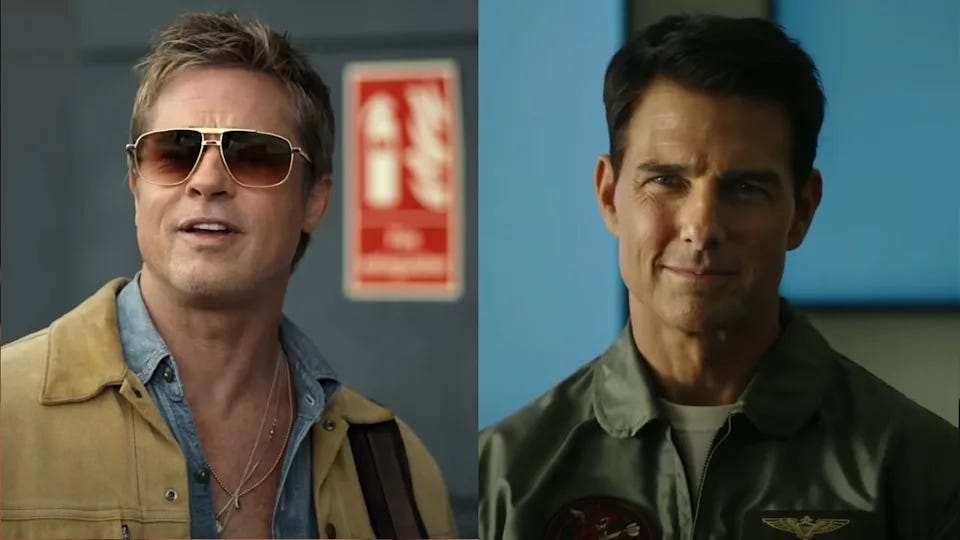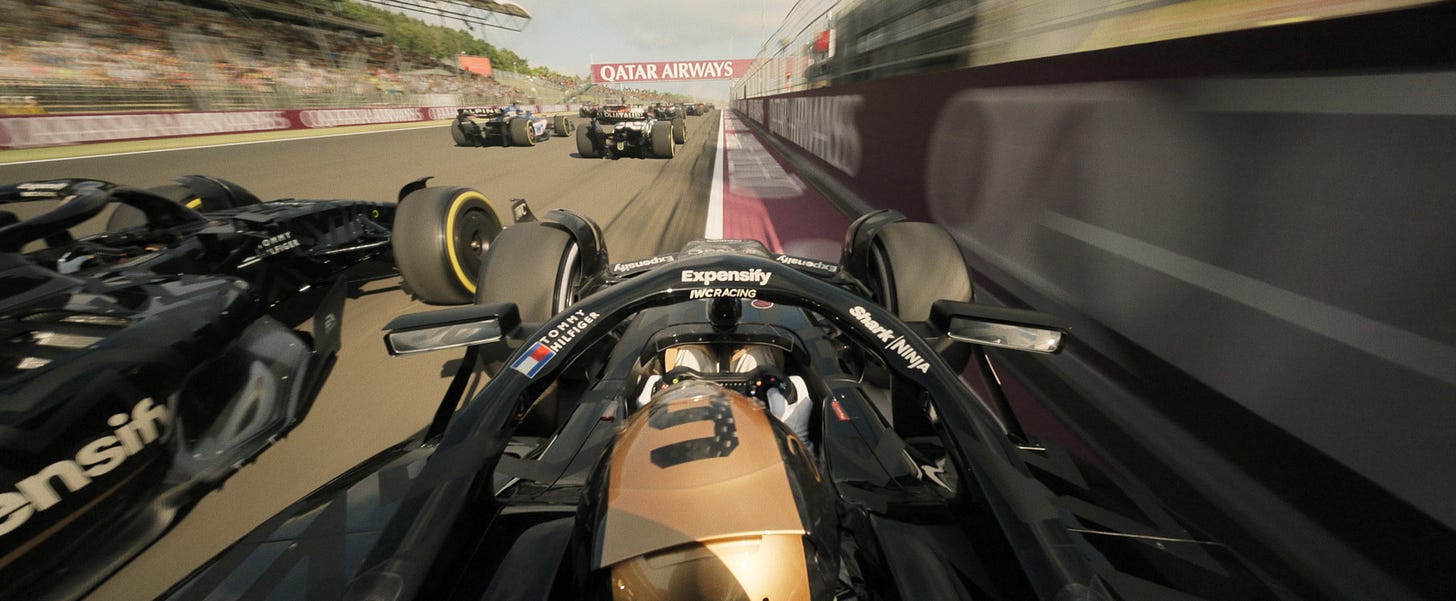Old engines, new circuits: Brad Pitt, Damson Idris, and the aging-icon drama in F1
“They‘re no longer saying Sonny Hayes is a has-been, they’re saying he’s a never-was.”
Joseph Kosinski follows his $1.4 billion box-office triumph Top Gun: Maverick with F1, trading fighter jets for pit crews and swapping Tom Cruise for Brad Pitt, while recycling the ‘washed‑up ace gets one last shot’ trope. Netflix’s Drive to Survive and the relative success of recent racing films (Rush, Ford v Ferrari) tee up high expectations; Kosinski mostly delivers, though the film red‑flags itself with bloat.
Brad Pitt plays Sonny Hayes, a once‑hot prospect whose hubris resulted in a near‑fatal crash. Decades later, team owner Ruben (Javier Bardem) drags him out of obscurity to rescue a floundering F1 team. Hayes fills the number‑two seat behind prodigy Joshua Pearce (Damson Idris), a driver long on raw speed and talent, short on discipline. Kosinski sets up a neat generational clash: Pearce focuses on his Instagram presence, leveraging the team’s ever-present computer sensors; Hayes reads analog manuals, bangs out push‑ups, and trusts feel over data.
The opening act hums, but five consecutive race calamities in the middle third stall momentum. Each failure is meant to ratchet tension; instead the story idles until the overdue climactic finish. Shave at least two of those losses and the film hits race pace.
Pitt coasts on effortless charm, yet his transformation from burnout to world-class contender feels unearned. Similar demeanor to Cliff Booth, except here he goes from living out of a van to competing with the best in the world. His counterpart, Idris, meanwhile, steals the movie. Pearce morphs from insufferable diva to earnest teammate, giving the climax lift. His transformation feels genuine and satisfying while Pitt’s is bolted on, formulaic. Kerry Condon, as the team’s straight-talking technical director, shares warm chemistry with Pitt, though their romance also feels blandly inevitable.


After the visceral propulsiveness of Top Gun: Maverick, Kosinski confirms that wasn’t a fluke with F1. He partnered closely with Apple (who produced the film) to develop cockpit-sized cameras that pulled in IMAX quality footage from the actual 2023-24 F1 season. The result is genuine, big-screen spectacle.
Thematically, F1 sketches the generational divide between Boomers and Millennials: analog vs. digital, gut-feel vs. analytics. A pre- vs. post-internet clash. And his ability to capture modernity with visual flair is rare: the Vegas Sphere makes an appearance, as does a Tiësto set at OMNIA. Every inch of race real estate is plastered with Geico, Salesforce, et al. logos. A paper-thin tech tycoon “villain” feels very reminiscent of HBO’s recent Mountainhead or 2021’s Don’t Look Up. F1 feels “2025” in a refreshing way. Warts and all.
The budget for F1 is estimated between $200–300 million. It’s interesting to see what vision comes out of such a massive investment. Although not perfect, the result is worthwhile. There’s a reason these tropes exist, it’s satisfying to see someone achieve the impossible, even if it’s a bit uneven here.
Verdict: solid podium finish, not a track record. See it on the largest possible screen.







